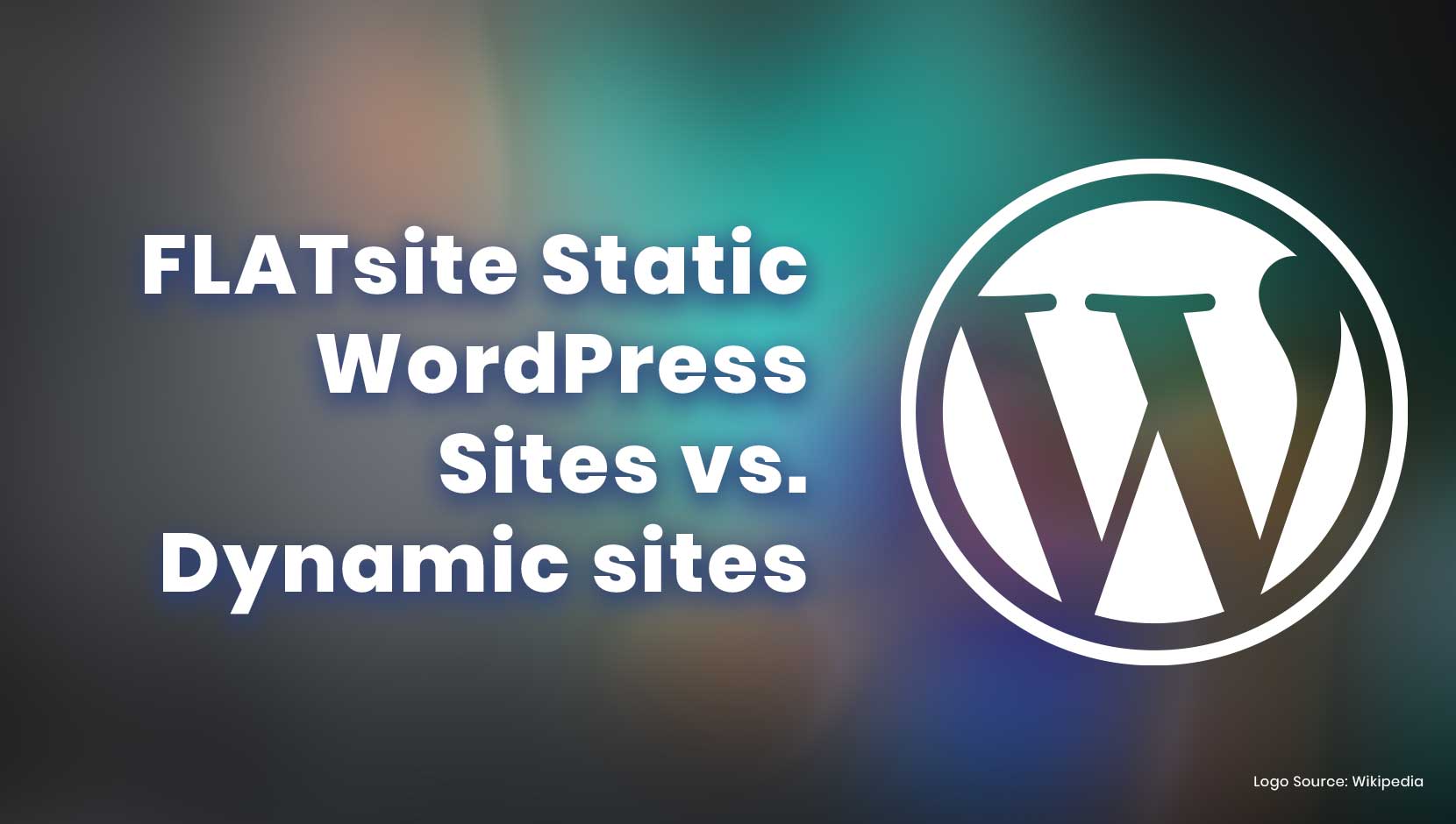Static sites are gaining some serious traction now, but they’re not actually that new. In the early days of the internet, all websites were static. Everybody who loaded a webpage saw the same content, no matter when they requested the page. And hacking was relatively unheard of. But when websites became more dynamic, with all sorts of extra add-ons, plugins and themes, they also became bulkier, more expensive to host, and easier to hack.
FLATsite is a refreshing return to basics that makes your dynamic WordPress website sleeker, cheaper, and more secure.
How does FLATsite work?

FLATsite takes dynamic sites and themes and generates static sites. This conversion takes place in the final stage when the admin pushes the site online.
This means you get to keep your WordPress themes, plugins, and tools while you work on WordPress in the backend. However, on the front end, the website your visitors see and interact with is completely static! (Which means you get all the fun of dynamic WordPress, with none of the bulkiness or slow loading.)
How static sites work?
Static sites have no database. The visitor receives every webpage on the website exactly as stored. This cuts down on time and resources, making static sites super-fast and ridiculously lightweight.
Here’s how static sites stack up against dynamic sites:
Static sites vs dynamic sites
| Static sites | Dynamic sites |
| Webpages are stored as HTML files and delivered to visitors exactly as they’re stored | Uses server technologies like PHP to combine information into a cohesive webpage that the visitor can read |
| Pages are pre-built and stored on the server | Dynamically builds webpages when the user requests them |
| Displays the same content to every visitor | Offers a unique combination of dynamic content and interactive features to every visitor |
| Usually requires plain HTML to create webpages | Pages can be created using PHP, JavaScript, ASP, and JSP |
| Cheaper to host (static sites are more lightweight, so they take up less space on a server) | More expensive to host (especially with multiple sites or larger sites) |
| Content changes only when files are published and sent to the web server | Server-side code allows the server to generate unique content each time a page is loaded |
| Usually harder to update (but FLATsite makes it easy to update your site using headless WordPress) | Usually easier to update |
| Content can be introduced and modified only in the site code | Content can be changed automatically through scripts on the server |
| Cannot usually be created using popular CMS platforms like WordPress (unless you use FLATsite) | Can be created using popular CMS platforms like WordPress |
| More flexible (every page on the website can be different) | You’re forced to use templates that display content the same way on every page |
Speed and SEO
| Static sites | Dynamic sites |
| Faster loading speed (Click here to make your site even faster!) | Slower loading speed |
| Sends the same server response for every request | May generate different HTML for each request |
| Better for your SEO (Click here to boost your SEO after migrating your site.) | More chances for SEO missteps |
| Can handle traffic spikes without putting too much extra strain on the server | Traffic spikes put undue pressure on the server’s resources |
Security
| Static sites | Dynamic sites |
| More secure | Easier to hack |
| Content can be introduced and modified only in the site code | Content can be changed automatically through scripts on the server |
| Cannot be attacked using XSS (Cross-Site Scripting) | Can be hacked using XSS (Cross-Site Scripting) |
| Have no database | Have a database |
| Cannot be hacked using SQL database injection | Can be hacked using SQL database injection |
| Require less maintenance | Require more maintenance |
| Unauthorised Users cannot change server data | Users can change server data |
| Lower maintenance costs | Higher maintenance costs |
| Sturdier | More complex than static sites, so there are more things that can break |
| Less likely to be targeted by hackers | Often targeted by hackers |
So…which is better? Static sites or dynamic sites?

Static sites are great for creating simple websites that load quickly and don’t require much user interaction, but dynamic websites generally allow for a more interactive user experience (even if dynamic sites do get hacked more frequently.)
If you want the best of both worlds (the speed, security and lower costs of a static website, along with the interactivity and extra features of a dynamic website), it’s best to use a static site generator like FLATsite. That’s because FLATsite allows you to create a dynamic website on the backend using headless WordPress but lets you launch your website as a static site!
Learn more about going static to secure WordPress sites here.
The Takeaway
Static sites are faster, more secure, easier to maintain, and cheaper to host than dynamic WordPress sites. Andif you generate your static sites using FLATsite, you’ll get to keep the WordPress themes and plugins you love, without having to worry about doing any of the maintenance you hate.
Sign up for FLATsite and see why the tech industry has been raving about static sites!







